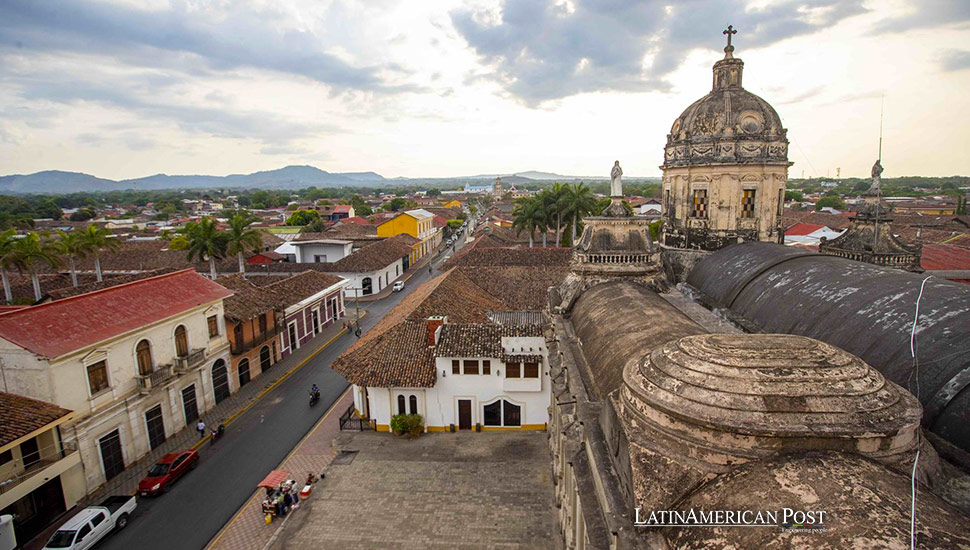Granada, Nicaragua’s Colonial and Tourist Jewel, Celebrates 500 Years

Nestled on the shores of Central America’s largest lake, Lake Nicaragua, the colonial city of Granada marks its 500th anniversary, showcasing its rich heritage amid vibrant streets and storied landmarks.
In the heart of Nicaragua, along the expansive shores of Lake Nicaragua—also known as Lake Cocibolca—lies Granada, a city that encapsulates the essence of Spanish colonial charm and complex historical narratives. Granada celebrates a significant milestone this year: the 500th anniversary of its founding by the Spanish conquistador Francisco Hernández de Córdoba. Amidst local tribal wars and nestled between the indigenous settlement of Xalteva, the shark-inhabited ‘Sweet Sea’ of Lake Nicaragua, and the mysterious, witch-tale-filled Mombacho volcano, Granada was established as a strategic and vibrant center of commerce and culture.
Granada’s Historic Legacy
Since its inception in the early 16th century, Granada has played a pivotal role in Nicaragua’s history. It served as a crucial trading hub with access to the Caribbean and Pacific oceans. Its prosperity, however, made it a target for plunder by English pirates and American filibusters. The most notorious of these was William Walker, an American filibuster who, upon being defeated and expelled in 1856, ordered parts of the city to be burned down, an act that left an indelible scar on its history.
To commemorate its 500-year legacy, the city has launched a year-long series of events under the theme “History, culture, and tradition.” These activities are designed to celebrate and elevate the rich historical heritage of the city, its culture, and its people. Granada, known as Nicaragua’s oldest city, is a living museum that witnesses countless historical events that have shaped its physical and cultural landscapes.
Rafael Casanova Fuertes, a prominent Nicaraguan writer and historian, refers to Granada as the “Gran Sultana” due to its Moorish and Andalusian appearance, a reminder of its colonial past. “There’s so much to say about Granada: at 500 years, it remains a tourist gem, preserving not just its architecture but its essence and idiosyncrasies,” Casanova notes.
Cultural Beacon
Granada has also been a cultural beacon in Latin America, historically hosting significant events like the International Poetry Festival. Until its closure by the government in 2022, it was one of the most important literary gatherings in the region, attracting 1,500 poets from 120 countries. The city continues to celebrate the arts through the still-active International Festival of Blues and Jazz.
The architectural grandeur of Granada is palpable in its colonial relics, such as the Granada Cathedral and La Merced Church. These structures, adorned balconies, wrought-iron lamp posts, and shaded plazas, invite visitors to step back in time. The bustling local market offers an array of Nicaraguan crafts and culinary delights like vigorón—a traditional dish made of yuca, pork rind, and a spicy salad emblematic of Granadan cuisine.
Granada’s historical significance extends beyond its architecture and festivals. It has produced many of Nicaragua’s prominent figures, from presidents to business leaders and intellectuals, many of whom hail from the historic “Calle Atravesada,” home to Granada’s old-guard society.
According to Casanova, visitors can also experience unique horse-drawn carriage rides through the city, offering a glimpse into the traditional funeral processions that are a unique cultural feature of Granada.
Enriching Cultural Tapestry
Further enriching its cultural tapestry is the archipelago of over 365 islets in Lake Nicaragua, formed thousands of years ago by the eruption of the Mombacho volcano. This natural wonder, now a protected reserve, houses one of the last tropical rainforests in Nicaragua. It adds to why Granada is more than just a city—it’s a cornerstone of Central American heritage.
Also read: Nicaragua’s Heat Wave Intensifies: Regional Climate Alert
As Granada celebrates five centuries, it honors its past and looks forward to a future where it continues to be a beacon of culture, history, and tradition. This anniversary is about looking back and preserving and enriching the city’s unique identity for future generations, ensuring that Granada remains a vital part of Nicaragua’s soul and a must-visit destination in Latin America.





